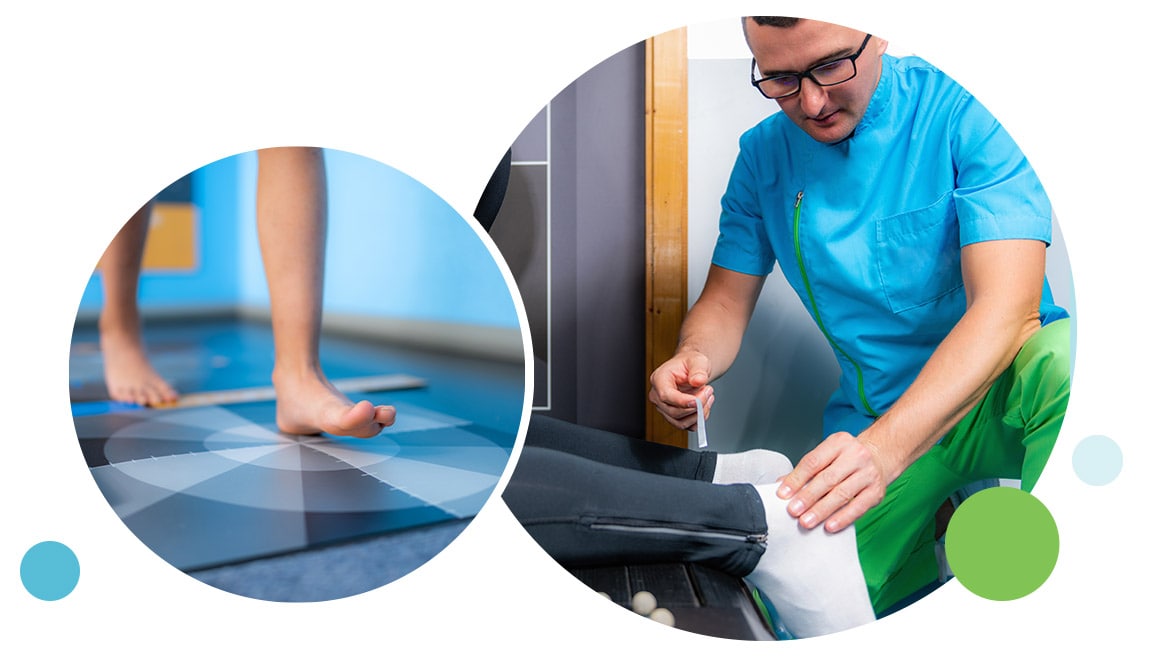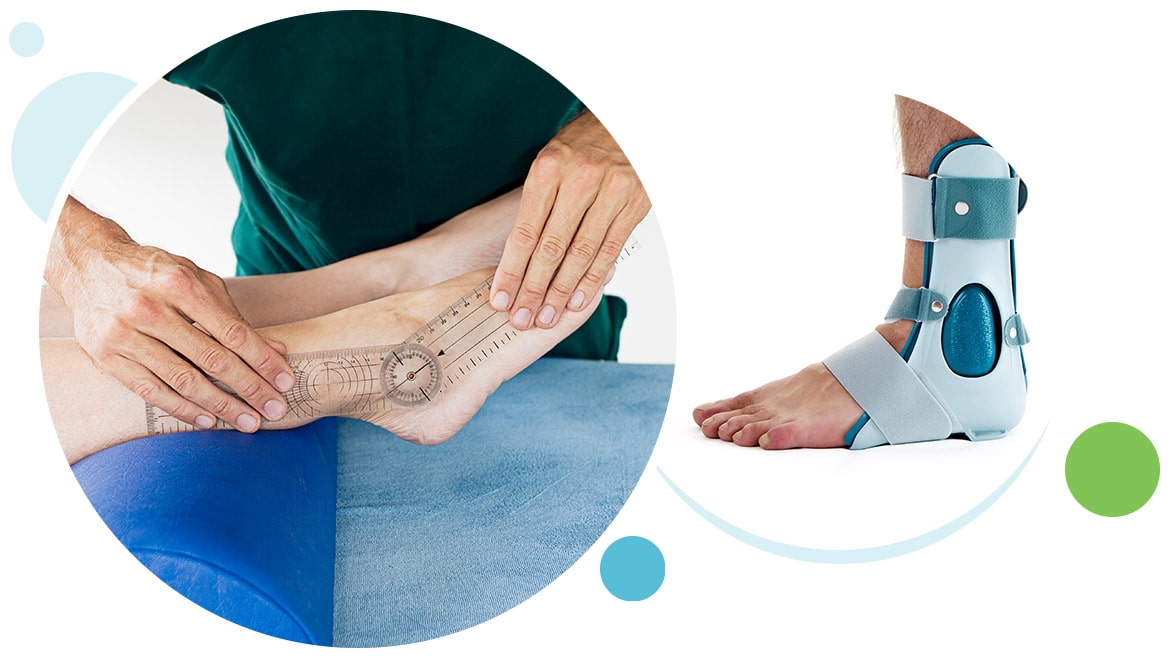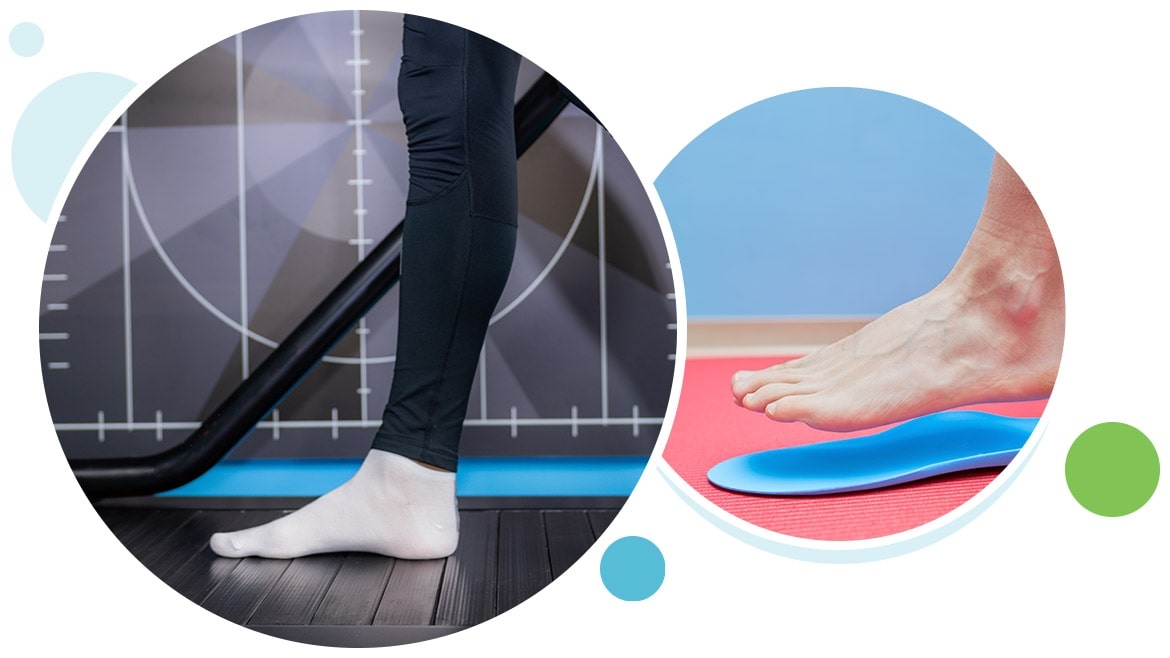Every foot is unique and most shoes do not properly support the individualized way each of us use our feet, ankles and lower legs. Wearing shoes that don’t compliment and act in harmony with your body can lead to a variety of ailments and pain. That is why our team at Northstate provides an expert biomechanical analysis and prescribes supportive customized shoe inserts known as “orthotics,” to target specific foot and ankle conditions, body structures and lifestyles.
In this post, our team of experts “walk” you through the process of biomechanical analysis, how we use that to properly fit custom orthotics, the types of conditions that orthotics can help with and the different types of prescription orthotics that people use to increase mobility, support activities, or maintain the health of lower extremities.
WHAT IS BIOMECHANICAL ANALYSIS?
When all the parts of your lower body are working together in concert, the foot and ankle create a strong foundation to support tremendous pressures we subject them to in our daily lives. Humans have evolved an ideal structure and alignment of the foot and ankle over time, and when injuries occur, structural defects are present, or when degenerative processes are affecting the foot and ankle, alignment and structural issues result in painful foot conditions.
Biomechanical analysis is the study of motion of the human body and can be a powerful tool for determining what causes injuries and how we can prevent them from reoccurring. Northstate’s team is professionally trained to analyze the alignment of your feet with the rest of your lower extremity including your knees and hips in order to detect potential factors which can predispose you to injury.
With this deeper understanding from our analysis, we are then able to create custom orthotics that improve or limit the progression of foot problems. The fitting of custom orthotics is an important part of preventing, minimizing or resolving foot conditions with non-surgical treatments and ensuring proper healing as well as quick recovery after foot or ankle surgery. The goal of biomechanical analysis is to determine how your foot compares to the ideal foot structure and to analyze the movement and interaction of your body parts over varying ranges of motion.
Types of Biomechanical Analysis
One of the most common types of biomechanical analysis used for foot ailments or injuries affecting a person’s ability to walk is a gait analysis. Gait analysis is a series of tests and measurements done by a highly trained podiatrist that provide a detailed understanding of how your foot and ankle structure compares to that of the ideal human structure while both stationary and being actively used.
A typical gait analysis laboratory has several cameras (video or infrared) placed around a walkway or a treadmill, which are linked to a computer. The patient has markers located at various points of reference of the body and the patient walks down the catwalk or the treadmill as the computer calculates the trajectory of each marker in three dimensions. A computer model is then applied to calculate the movement of the underlying bones, which gives a complete breakdown of the movement of each joint.
Many labs also have floor-mounted load transducers which measure the specific forces your body applies to the ground and use surface electrodes attached to the skin to detect the electrical activity of muscles. Deviations that are detected from normal patterns are used to diagnose specific pathologies, predict the outcome of treatments, or determine the effectiveness of training programs
During gait analysis, the most common aspects of the foot structure that are considered include:
- Arch Height Index (flatfoot, high arches)
- Foot Posture Index (pronation or supination of the foot)
- Range of Motion (ROM) of important joints
- Rear Foot Angle
- Tibial Torsion Measurement
- Subtalar Joint Neutral

SUPPORTING FOOT HEALTH WITH PRESCRIPTION ORTHOTICS
After our team performs a biomechanical analysis, we now have a much clearer picture of exactly how your lower extremities are structured and working together. From there, we are able to begin developing shoe inserts that are customized for your specific body and needs in order to complement and support your natural gait. These prescription foot orthotics can be one of the best tools to prevent, minimize or resolve your foot pain and speed up your recovery after foot or ankle surgery.
Some of the different podiatric conditions that may benefit from prescription orthotics include those arising from athletic injuries, arthritis, bunions, bursitis, geriatric issues, diabetic ailments, flat foot, charcot foot, hammertoes, heel spurs, high arches, plantar fasciitis and back pain. Here is a list of specific conditions and how prescription orthotics may help.
- Rheumatoid arthritis and osteoarthritis can cause discomfort in the feet and poor positioning that orthotics may help to correct.
- Sometimes poor positioning of the feet, such as arches that roll inward, or lack of cushioning can cause pain that orthotics can lessen.
- Bunions are painful bumps that can develop at the base of the big toe and cause foot deformities. Orthotics with a wide toe box can help to reduce pressure on the big toe.
- Inflammation of fluid-filled sacs in the heels and toes can cause bursitis pain and discomfort. Orthotics with heel and arch support can help to reduce bursitis discomfort.
- Often, a person with diabetes can lose sensation in their feet, a condition known as diabetic neuropathy. When this occurs, orthotics can help to reduce excess stress and pressure that can lead to foot ulcers.
- Flat feet can cause foot, ankle, and back pain. Orthotics can help to support the feet and promote proper foot positioning.
- Hammer toes often occur as a side effect of bunions on the big toe. They cause second-toe pain and deformities on the ball of the foot. Orthotics can provide additional support to the feet and reduce the likelihood that hammer toes will worsen.
- Heel spurs are conditions where excess bone grows on the back or bottom of the heel. Orthotics can support the foot and reduce inflammation.
- Very high arches can stress muscles in the feet and lead to a number of conditions, such as shin splints, knee pain, and plantar fasciitis. Orthotics can help prevent a person’s feet from rolling excessively inward or outward.
- People who’ve experienced trauma to their feet and ankles may require extra support during the healing process with orthotics.
- Plantar fasciitis is a common cause of heel pain. Doctors may sometimes recommend orthotics to support the heel and foot and reduce inflammation and heel pain.

TYPES OF PRESCRIPTION FOOT ORTHOTICS
Depending on the nature of your foot condition and the results of the biomechanical analysis, your Northstate podiatrist will make a recommendation for a specific type of orthotic. Different materials, designs and production processes are used for each unique foot problem. Getting the shape just right makes all the difference in alleviating symptoms. Here are some of the common types of orthotics:
Accommodative Orthotics
This type of orthotic is primarily used to minimize the impact forces on the body from walking. These orthotics “accommodate” everyday physical activities and help support the foot in the places that experience the most impact relative to the way you walk, based on the structure of your foot.
Functional Orthotics
Functional orthotics are used to restore proper structure and function to the foot. When alignment and structural issues of the foot and ankle occur, these inserts can help to correct the biomechanics of the foot by adding support in areas that need it. This can progressively improve your condition and alleviate foot pain.
Sports Orthotics
When a patient is involved in high impact activities, such as hiking, running, or competitive athletics, orthotics add extra support to help avoid stress-related injuries. A common use of sports orthotics is to treat plantar fasciitis, a condition that frequently affects athletes who may be placing high stress on their lower legs by starting and stopping quickly or those who do not warm up adequately. While these inserts are not necessary for all athletic activities, they will provide support when the foot is under stressful conditions.
Pediatric Orthotics
As children’s feet develop and mature, the arches should begin to take shape and the foot and ankle should begin to properly align themselves. Some children’s feet require a little extra help in order to form correctly and to avoid future foot problems. Pediatric orthotics may be used to help adjust the alignment and allow the arches to form correctly when a defect or developmental issues occur.
Ankle Braces / Ankle Foot Orthosis
In cases where both the foot and ankle are experiencing a problem, or when the biomechanical relationship between the two requires adjustment, an ankle-foot brace may be fitted. This device is customized to support the foot and allows realignment and structural improvements to occur simultaneously. Most commonly these devices are used in cases of more severe flatfoot, ankle instability, or ankle arthritis.
If you are experiencing foot pain, whether progressive or acute, the podiatrists at Northstate are available to perform a thorough examination and make a recommendation for treatment. Custom orthotics may be the perfect answer to helping you start off your new year on the right foot! Please reach out to our friendly staff or book an appointment online. We are always committed to improving your life one step at a time.

